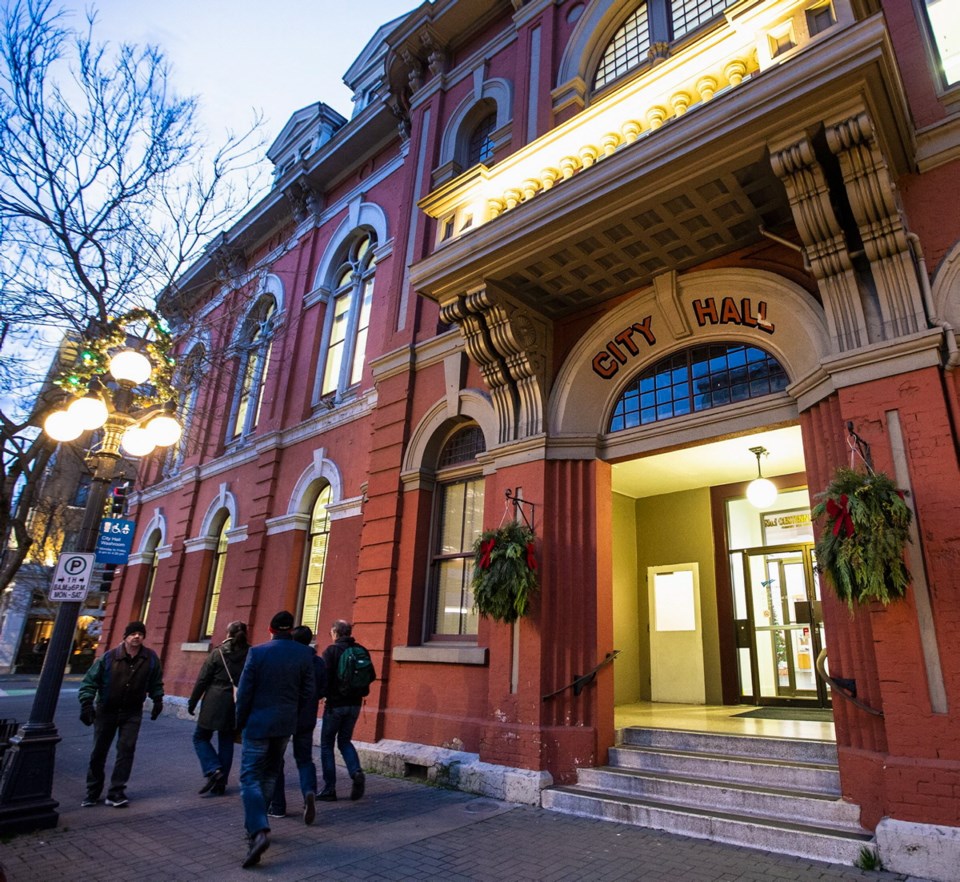Victoria city councillors are considering granting themselves a 54% pay hike. The raise would boost their annual remuneration from the present level of $45,384, to $70,000.
Coun. Ben Isitt, one of the proponents, says he and his colleagues are working 40 to 60 hours a week, and should be paid like full-time staff. The current median wage among the city’s employees is $70,000 — the amount Isitt is pushing for. By the way, the median income in Greater Victoria was $40,500 in 2017.
The proposal isn’t yet a done deal. Council agreed to solicit public input before proceeding.
Yet the method selected to gain public feedback is wide open to manipulation. Residents are invited to send an email to [email protected], with “Feedback on the Draft 2020 Budget” in the subject line. A cynic might imagine Isitt’s supporters sending a flood of emails supporting the pay hike.
If councillors really want to know what voters think, all they need do is read our letters to the editor page. That should put an end to this scheme.
Or the city could engage a polling firm to conduct a statistically reliable survey. One of the country’s leading companies in the field puts the cost of such a survey at between $5,500 and $6,500.
That’s a fraction of the annual cost of the proposed salary increases — $205,600. If council is serious about learning the public’s mindset, here is the proper approach.
But there are broader issues to concern us. First, if Isitt is correct that councillors are working 40 to 60 hours a week, we might reasonably ask why this is so. These are meant to be part-time jobs, not full-time employment.
Is it because he and his colleagues have over-reached their mandate, engaging in far-flung enterprises? There are certainly reasons for thinking so.
The proposal that the city might sue energy companies for polluting the environment, though later abandoned, comes to mind. Or the mayor’s trip to Alberta to check out the oil patch.
How about the attempted ban on plastic bags, struck down by the courts for exceeding municipal authority? We could go on.
Then again, if councillors want to be treated as full-time employees, are they willing to submit to the requirements that come with such jobs? These usually include serving a six-month probationary period, submitting to annual performance reviews, meeting certain educational requirements, and in the extreme, being dismissed for poor performance.
Second, there is the question of what happens next if the pay raise is put through. Shouldn’t we expect other municipalities in the region to follow suit?
And what about the principle that council salaries should match those in similar-sized cities?
Abbotsford’s councillors make $40,500. Yet that city’s population is 141,000, 50% larger than Victoria’s. Kelowna’s councillors make $36,500, and that city’s population is 136,000.
Closer to home, councillors in Saanich take home $46,000; the population is 119,000.
If Victoria’s salary hike goes ahead, it will likely make council members the most richly paid of any medium-sized city in B.C., and by a considerable margin.
Lastly, might it be that the longer terms in office recently granted local governments have gone to council’s head?
Prior to 1987, municipal elections were held every two years, or in some cases annually. That period was increased to three years in 1990.
Then in 2014 a four-year term was introduced, to coincide with the time frame for provincial elections.
It’s not unreasonable to suppose that given the security of greater distance from the voters, councillors might be more ready to engage in unpopular schemes.
Over the last two years we’ve seen a series of imprudent actions by the city. The proposal to boost council remuneration 54% is by far the most prominent. But ill-designed bike lanes have been introduced that caused widespread traffic disruption and damaged local businesses.
Relations between the city and its police force can only be described as dysfunctional.
There was Isitt’s motion calling on the city to seek federal cost sharing to pay for the Remembrance Day ceremonies. Or his attempt to remove Christmas decorations from public properties.
These, and numerous other follies, suggest a council at odds with public sentiment, yet unafraid of the consequences. Perhaps we should return to the era of more frequent civic elections, when local politicians were conscious of their limits.



